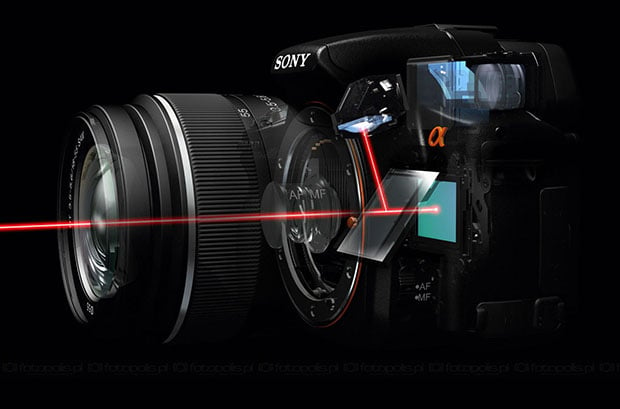Why the Camera Industry Clings Onto the Design of Early SLR Bodies
![]()
Have you ever wondered why the professional photography industry is dominated by cameras that carry on the design tradition that was started by classic film SLRs?

When digital cameras first appeared, the available display technology was deficient when compared to the “resolution” achieved by simply projecting the image entering the camera via a mirror into a focusing screen (usually, a round piece of ground glass, although some designs used fresnels) that would then be reflected by a pentaprism (or pentamirror). So, it’s natural that, from the start, DSLRs retained the traditional SLR bodies, with some minor changes, namely, being a little bulkier than regular SLRs, to fit inside all the electronic components.
Even today, any photographer (and videographer) who is worth his salt will prefer looking into the eyepiece than at an exposed display, at least during framing, exposure, and focusing, because incident light on the display (glare) will reflect on to your eye, making it difficult to see what the image actually looks like.
![]()
Using a pentaprism still has many advantageous features that make them better than digital displays, although they don’t hold the same degree of truth they did 10 years ago:
- When using an optical viewfinder, you are sampling EVERY light ray that hits the focusing screen, and not only the ones that hit a pixel sensor. Provided that your camera’s focusing array is in good condition, the eyepiece will display a very faithful representation of what your scene actually looks like, in regards of color and brightness. Nowadays, displays (and sensors) have resolutions and dynamic ranges that approach that of the human eye, but we are not quite there yet.
- Contrast detection autofocus is deficient when compared with phase detection focus on SLRs and the good old “something is wrong” approach of the human eye. Contrast detection is slower, and does not operate properly under low light conditions. Contrast detection is common to mirrorless cameras.
- This one might seem like a minor point, but not having a mirror in front of the sensor really leaves your sensor exposed to debris and dust. I clean my camera’s sensors (with the menu option, of course. NEVER clean a sensor by hand) each time I use them on the field, and, most of the time, the mirrorless camera is the one that needs servicing because of the sheer amount of dust that gets stuck on the exposed sensor. This is something that will never change.
Sony’s SLT line of cameras use a modified SLR design: Instead of having a completely opaque mirror, the camera’s use a semi-translucent mirror set at a 45 degree angle. When light hits the mirror, it is directed towards two different sensors: One set directly above the mirror, where the focusing array would be, which is used for phase detection focus and exposure, and the second one behind the mirror, where a normal sensor would be, for imaging.

The SLT design uses the image rendered by the imaging sensor for displaying, dumping completely the optical approach to focusing/framing. Mind you, the SLT line was designed especially with filming and video in mind (which makes them my favorite line of DSLRs), and most, if not all, professional photographers would rather use the regular SLR design with pentaprism.
So, there are three basic reasons we cling to the old SLR design:
- Technology: the eye, and pure optics, are still the best way to get a faithful image for focusing and framing. Sensors and displays are not quite there yet.
- Ergonomy: The GH line of mirrorless cameras by Panasonic uses the SLR design. Sturdier and easier to handle and stabilize than the viewfinder or rangefinder design, this is, I believe, the main reason why we still use the SLR design
- Tradition: The photography crowd is one that does not embrace paradigmatic change with ease. Optics is an old science, perhaps one of the oldest studies of physics. The adoption of new technologies involving optics would require a very objective upgrade from the older model, especially when you consider how much money one invests in collecting all the necessary equipment for photography.
Unlike other areas of digital technology, photography does not require one to change equipment every year. A Canon T2i bought 4 years ago is still a very respectable piece of equipment when used properly. So, letting go of a design that has worked perfectly for photographers for the past 60 years and that has yet to be replaced by a significantly better design is not an easy thing to do, especially when you consider the costs of embracing a new model.
About the author: Diego Noriega Mendoza is an amateur photographer and aspiring filmmaker based in Mexico City, Mexico. You can find him on Twitter and Facebook. This article originally appeared here.
Image credits: Film star by APM Alex, Pentaprism by avikovacevich, Wide angle viewfinder by Lars Plougmann